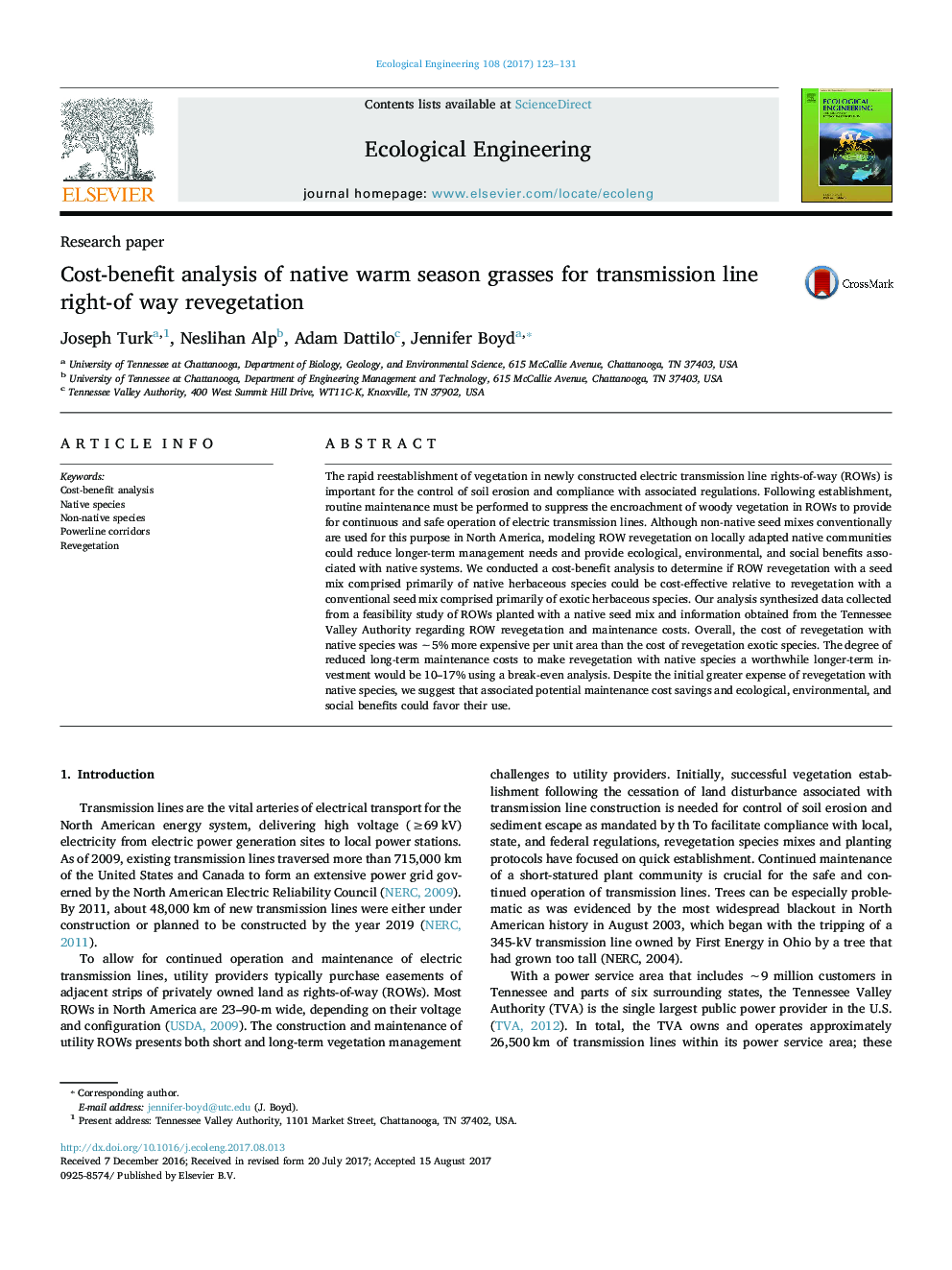| Article ID | Journal | Published Year | Pages | File Type |
|---|---|---|---|---|
| 5743525 | Ecological Engineering | 2017 | 9 Pages |
Abstract
The rapid reestablishment of vegetation in newly constructed electric transmission line rights-of-way (ROWs) is important for the control of soil erosion and compliance with associated regulations. Following establishment, routine maintenance must be performed to suppress the encroachment of woody vegetation in ROWs to provide for continuous and safe operation of electric transmission lines. Although non-native seed mixes conventionally are used for this purpose in North America, modeling ROW revegetation on locally adapted native communities could reduce longer-term management needs and provide ecological, environmental, and social benefits associated with native systems. We conducted a cost-benefit analysis to determine if ROW revegetation with a seed mix comprised primarily of native herbaceous species could be cost-effective relative to revegetation with a conventional seed mix comprised primarily of exotic herbaceous species. Our analysis synthesized data collected from a feasibility study of ROWs planted with a native seed mix and information obtained from the Tennessee Valley Authority regarding ROW revegetation and maintenance costs. Overall, the cost of revegetation with native species was â¼5% more expensive per unit area than the cost of revegetation exotic species. The degree of reduced long-term maintenance costs to make revegetation with native species a worthwhile longer-term investment would be 10-17% using a break-even analysis. Despite the initial greater expense of revegetation with native species, we suggest that associated potential maintenance cost savings and ecological, environmental, and social benefits could favor their use.
Related Topics
Life Sciences
Agricultural and Biological Sciences
Ecology, Evolution, Behavior and Systematics
Authors
Joseph Turk, Neslihan Alp, Adam Dattilo, Jennifer Boyd,
